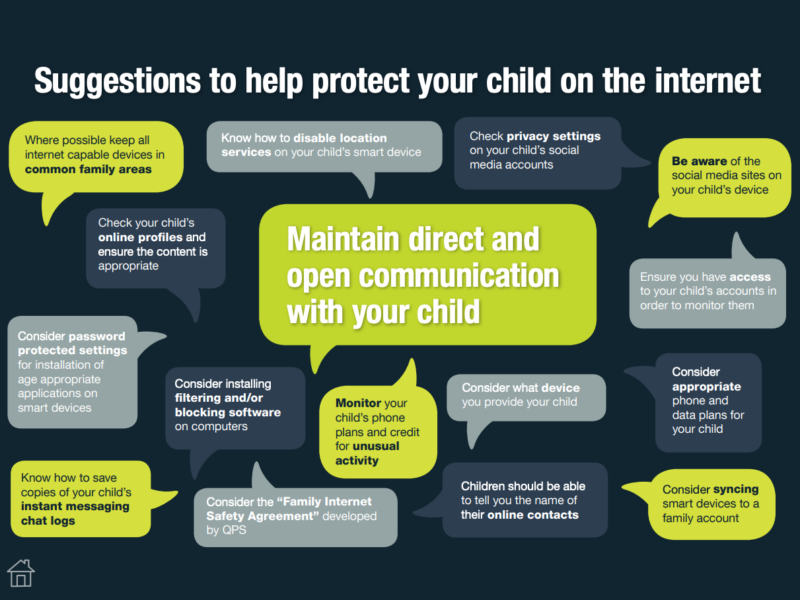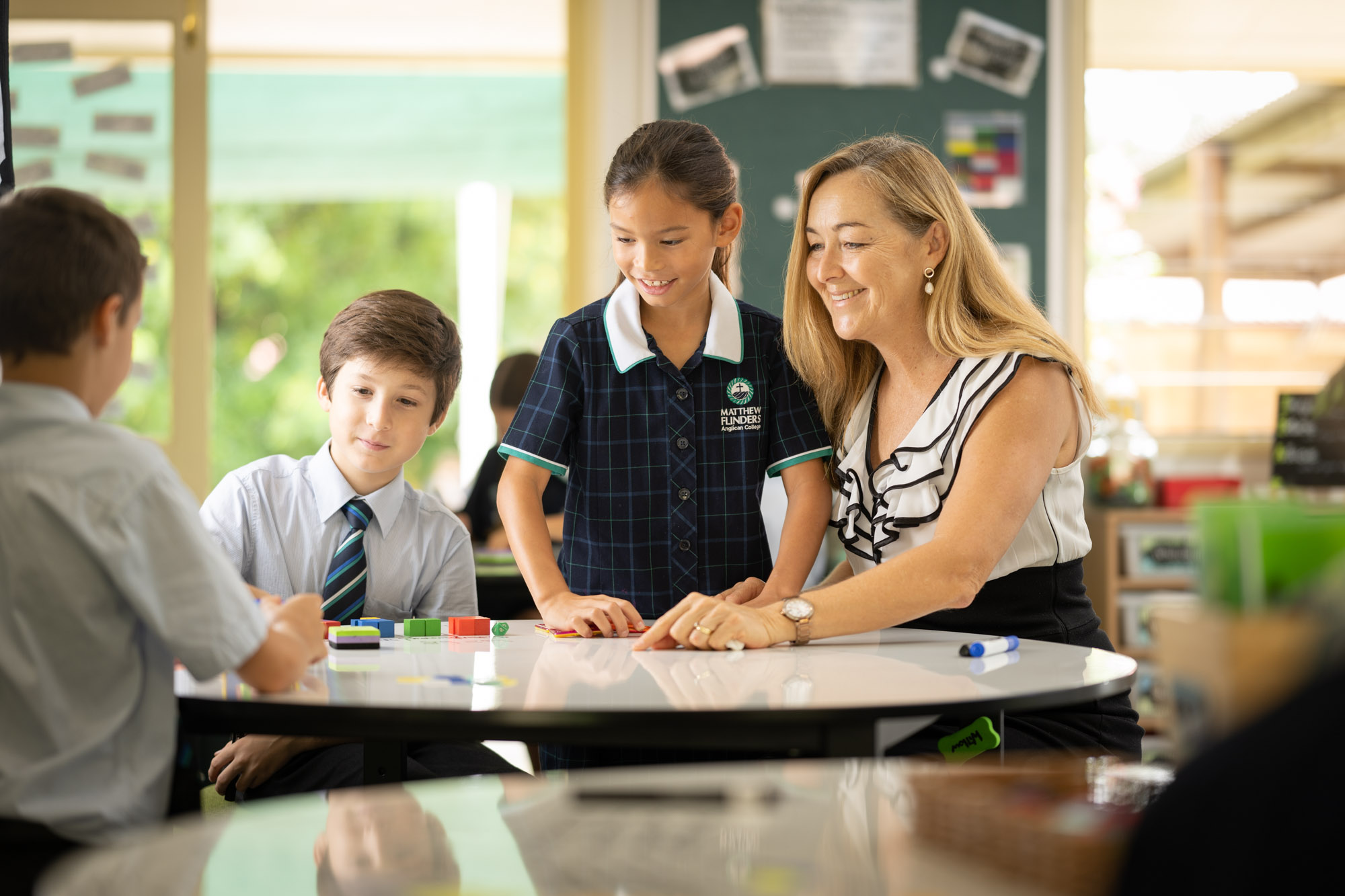Article by Ingrid Clarke, Head of Senior Primary, Matthew Flinders Anglican College
As a parent of three teenagers, I understand the challenges experienced to ensure our children are not exposed to the potential dangers of social media, online gaming and entertainment. In our home there is the usual adolescent push back when setting parental controls on smart devices, restricting access to and time spent on the internet, and also to the ongoing monitoring of mobile devices.
My husband and I are mindful that our children, like all young people, are increasingly exposed to an open and collaborative online culture, which allows them to access information, maintain relationships, and create and share content (Collin, Rahilly, Richardson, & Third, 2011). We are also aware that our children are at a dynamic stage of development in which risk-taking behaviours and emerging decision-making can lead to negative outcomes (Viner, 2005).
As a precaution to these issues around esafety and children’s development, we remain actively involved and vigilant regarding the nature of our children’s online activities. At home we use internet safety filters that monitor online activity and continue to openly communicate and negotiate with our children about their safe use of technology.
Like many parents, we still face unexpected challenges as we have strived to keep up with the ever-changing technologies available to our children. This only serves to strengthen our commitment to keeping our children safe online.
How much screen time do young people have in Australia?
There’s no doubt that esafety in the home is a growing concern for families, considering the proportion of Australian households with access to the internet at home has been steadily climbing over the past two decades, with 91% of Australian adults having a home internet connection (ACMA, 2022).
Add to this, the Australian Institute of Family Studies reports that children spend approximately 2.5 hours per weekend day, on average, doing screen-based activities at ages 4-5 and 6-7 years (149-151 minutes). After this, the average weekend screen time increases with age, with children spending an average of 253 minutes (4.2 hours) per day on screen-based activities at ages 12-13 (Australian Institute of Family Studies, 2018).
The recommended daily screen time for children in Australia is noted on the Australian Institute of Family Studies website, and recommends:
- no screen time for children younger than two years
- no more than one hour per day for children aged 2-5 years
- no more than two hours of sedentary recreational screen time per day for children and young people aged 5-17 years (not including schoolwork).
What are the risks of children being exposed to inappropriate content?
With the explosion of child-based internet games and activities and subsequent increases in childhood internet use, exposure to inappropriate content has also elevated. In 2016-17, 14% of connected households with children aged 5-14 stated a child had been exposed to inappropriate material whilst online (ABS, 2018).
The recent scare on TikTok and YouTube with videos of Huggy Wuggy, the killer teddy, featured this game character in unsettling scenarios which were not appropriate for children’s viewing. This character is from horror survival game Poppy Playtime, however, as ‘Huggy Wuggy’ is a child-based character name, it slipped through some parental controls on devices and, as a result, young children viewed the inappropriate violent/horror content.
It can be difficult to prevent children accidentally stumbling across inappropriate content, especially if they use a range of platforms, like online games, social media, streaming sites or messaging apps. Therefore, parents are urged to be vigilant in monitoring your child’s access when on devices and your computer or iPad settings and filters at home.
When should parents and carers start being involved in teaching safe technology?
Parental involvement in the safe use of technology should start from a child's first use. And parents must continue to be a critical influence in children and young people being responsible digital citizens and engaging in online activities safely.
If parents are willing to provide children and young people with access to mobile phones and computers, then a responsibility to understand, model appropriate behaviour and communicate the basics of good digital citizenship should come with the access.
What are some of the best resources for parents to learn esafety?
As part of their privacy policies, social networking sites such as Facebook, Twitter, Instagram and YouTube specify that users must be at least 13 years old. Primary School-aged children should not have access to these apps due to the real safety risks that are associated with online predators.
Take a few minutes to read Who’s Chatting to Your Kids, an ebook published by the Queensland Police Service's Task Force, Argos. It provides information for parents on internet safety for children and young people. It discusses social networking, mobile phones, webcams and online gaming, and provides information about the types of things to look out for that may indicate children could be at risk.
I also highly recommend the eSafety Commission’s website where you can access:
• the esafety guide for parents which details information about the latest games, apps and social media, including how to protect your information and report harmful content.
• free parental webinars (https://www.esafety.gov.au/parents/webinars). Upcoming webinars in August are designed for parents of children aged 8 to 13 to learn about TikTok, Instagram, Snapchat and YouTube and help your children stay safe online.
The infographic below with 'suggestions to help protect your children on the internet' are worth considering and implementing in your home. The infographic is published on page 10 of the Who’s Chatting to Your Kids ebook.
How to create a Family Tech Agreement to build healthy habits
Creating a family technology agreement is a great way to establish rules that will assist your children in building good habits and using technology safely – now and in the future.
Here is an example of a family technology agreement for ages 5-8 click link and here is a family tech agreement example with Think U Know which is relevant to older children click link.
I encourage you to monitor your family's digital footprint to ensure your child’s safety online and support them in being respectful online citizens. You'll be teaching them skills for a happier and healthier life.

References
https://growingupinaustralia.gov.au/research-findings/annual-statistical-report-2015/australian-childrens-screen-time-and-participation-extracurricular
https://aifs.gov.au/resources/resource-sheets/online-safety
https://www.police.qld.gov.au/sites/default/files/2018-08/whoschattingebook.pdf
https://www.researchgate.net/publication/265063601_Risks_and_safety_for_Australian_children_on_the_internet
https://www.abs.gov.au/statistics/industry/technology-and-innovation/household-use-information-technology/latest-release
https://www.acma.gov.au/publications/2021-12/report/communications-and-media-australia-how-we-use-internet
https://www.thinkuknow.org.au/resources-tab/parents-and-carers

